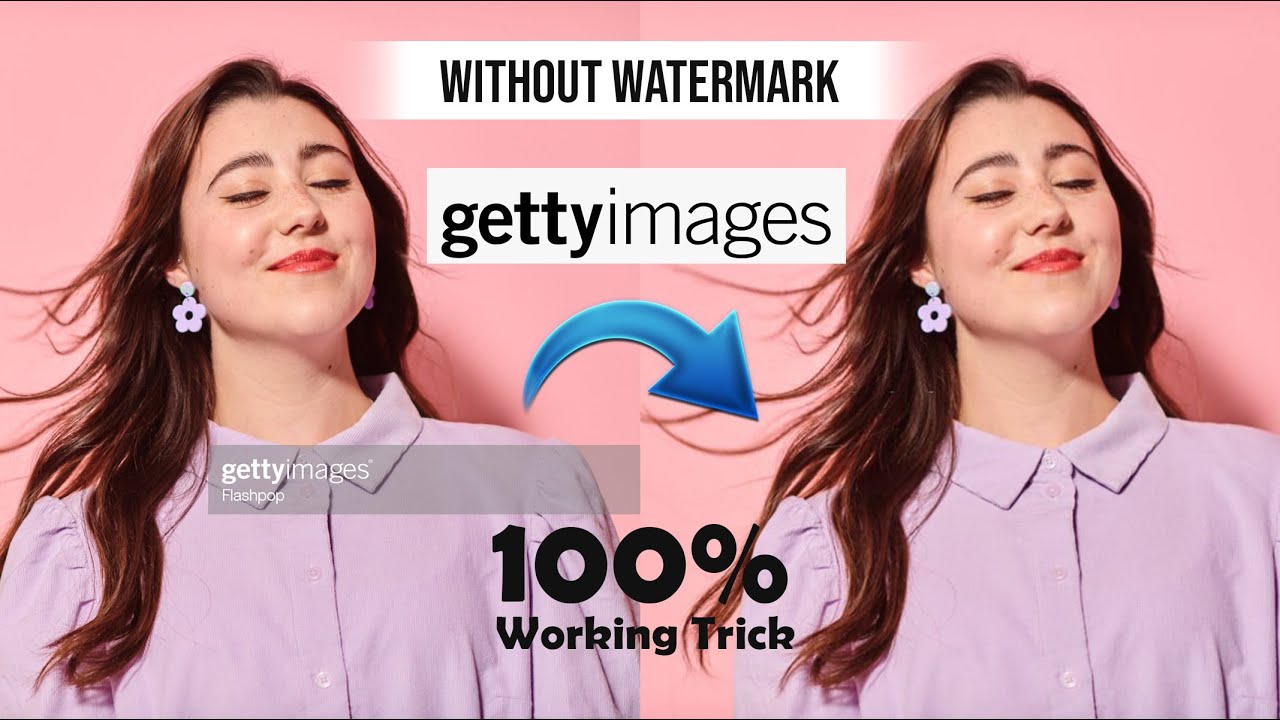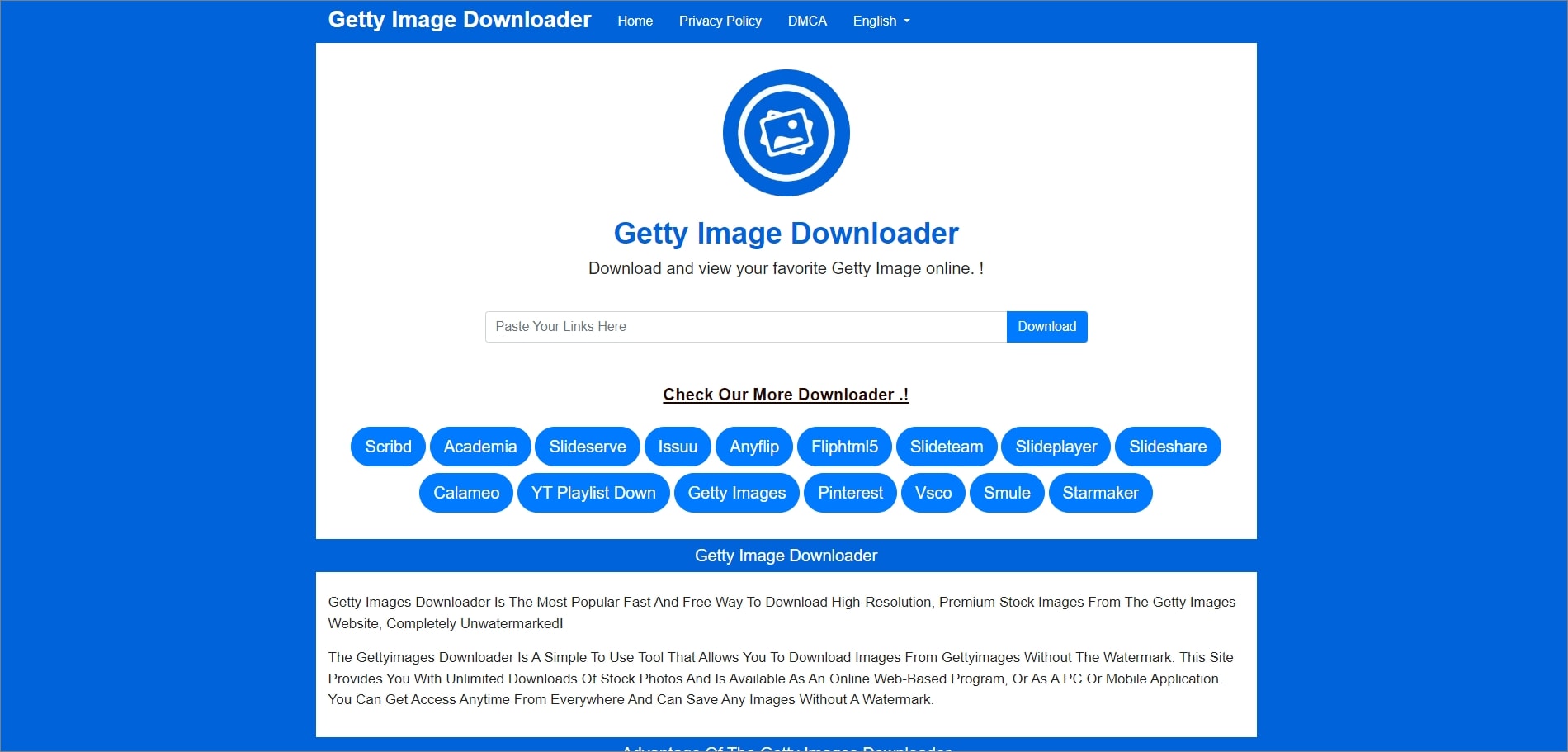Are you tired of searching for high-quality images only to find them plastered with watermarks? You're not alone! Many creatives, marketers, and businesses face this challenge when trying to source images from Getty. In this post, we'll explore updated methods to download Getty Images without watermarks, ensuring you get the visuals you need without any pesky distractions. Let’s dive in!
Understanding Getty Images and Watermarks

Getty Images is one of the largest and most reputable stock photo agencies in the world. They offer a vast library of stunning visuals, from iconic photographs to modern illustrations. However, with great quality comes a price—often accompanied by a watermark. But why do they use watermarks, and what do they mean for you?
What Are Watermarks?
Watermarks serve as a protective measure for copyright. When an image features a watermark, it indicates that the photo is owned by Getty Images, and unauthorized use is prohibited. Essentially, these marks act as a deterrent against theft and misuse, ensuring that the photographers and creators get the credit (and compensation) they deserve.
The Purpose of Watermarks
- Copyright Protection: They protect the intellectual property of the creators.
- Branding: Watermarks help in promoting the Getty Images brand.
- Encouragement of Legal Purchases: They compel users to buy the images legally to obtain clean versions.
As an image seeker, it’s crucial to understand that while watermarks can be frustrating, they safeguard the rights of artists and photographers. The good news? There are ways to access these stunning visuals while respecting copyright laws.
Legal Alternatives to Downloading Without Watermarks
Instead of trying to find methods to bypass watermarks, consider these legal alternatives:
- Subscription Plans: Getty Images offers various subscription plans that provide access to a certain number of images per month without watermarks.
- Free Trials: Occasionally, Getty Images provides free trials. You can use this to download images without watermarks for a limited time.
- Promotional Offers: Keep an eye out for discounts or promotional offers which allow access to images at a reduced cost.
By opting for these legal avenues, you not only support the creators but also gain access to high-quality images that enhance your projects. Remember, investing in quality visuals can significantly impact your brand’s perception!
In the next sections, we will delve into specific methods and tools that can help you find the images you need while respecting copyright laws. Stay tuned!
Also Read This: How to Download Getty Images for Free Without Watermarks
3. Legal Considerations for Downloading Images

When it comes to downloading images, especially from platforms like Getty Images, it's essential to tread carefully. While the allure of free, high-quality visuals is tempting, understanding the legal ramifications can save you from potential headaches down the line. Here are some crucial points to consider:
- Copyright Laws: Most images on Getty are protected by copyright. This means that using them without permission may lead to legal consequences, including fines and demands for payment from the copyright holder.
- Licensing Agreements: Getty Images operates on a licensing model. Before downloading, it’s vital to understand the terms of the license associated with the image. Some may allow limited use, while others prohibit any reproduction or modification.
- Fair Use: In certain cases, the doctrine of fair use allows for limited use of copyrighted materials without permission. However, this is a gray area that depends on factors like the purpose of use, the nature of the copyrighted work, and the effect of the use on the market value of the original.
- Attribution: Some images may require you to provide credit or attribution to the creator. Always check the specific requirements associated with the image you intend to use.
It's always best to err on the side of caution. If you’re unsure about the legality of using a particular image, consider reaching out to Getty Images for clarification or look for images that are explicitly labeled for free use, like those under a Creative Commons license.
Also Read This: Does iStock Sue Copyright Violators
4. Updated Methods for Downloading Getty Images Without Watermark
If you’re searching for updated methods to download Getty Images without a watermark, it’s crucial to approach this ethically and legally. Here’s a rundown of some legitimate avenues you can explore:
- Trial Subscriptions: Many stock image sites, including Getty, offer trial subscriptions. This allows you to download a limited number of images without a watermark during the trial period. Just make sure to cancel before the trial ends if you don’t want to continue.
- Public Domain Images: Check Getty Images' collection for public domain or royalty-free images. These images can often be downloaded without a watermark, providing they fall within the public domain guidelines.
- Creative Commons Search: Utilize Creative Commons’ search tools to find images that can be used for free, legally. You can filter results by usage rights, helping you find images without the watermark issue altogether.
- Contact Photographers: If you come across an image you love on Getty but can’t afford to pay for it, consider reaching out to the photographer directly. They might be willing to provide you with a version without a watermark, especially for non-commercial use.
- Image Collaboration Platforms: Platforms like Unsplash or Pexels offer high-quality images that are free for commercial use. While they’re not Getty, they can often fill your needs without the watermark hassle.
Remember, while it’s tempting to seek quick fixes, respecting copyright and licensing agreements is essential. The best approach is always to ensure you have the right to use images legally and ethically.
Also Read This: How to download Foap Image without watermark for free
5. Using Screenshot Tools as a Quick Fix
Sometimes, you need a quick solution, and screenshot tools can come to your rescue! While this method isn’t the most ideal for high-quality images, it’s a practical option when you’re looking to grab an image in a pinch.
Here’s how you can effectively use screenshot tools:
- Choose Your Tool: Most operating systems come with built-in screenshot tools. For Windows, you can use the Snipping Tool or Snip & Sketch. On macOS, simply press Command + Shift + 4 to select a portion of your screen.
- Find Your Image: Navigate to the Getty Images site and locate the image you want to capture. Make sure it’s displayed clearly on your screen.
- Take the Screenshot: Use your chosen tool to take a screenshot. Try to capture just the image itself to avoid extra borders or text that may distract from the visual.
- Edit if Necessary: Open the screenshot in an editing tool to crop out any unwanted sections. This can help you focus solely on the image you want.
While this method works as a quick fix, remember that the quality might not be as high as the original image. Plus, using screenshots might breach copyright rules, so it's best to consider this option carefully.
Also Read This: How to Get Photos from Getty Images Without Watermark: Legal Methods for Accessing Images
6. Utilizing Image Editing Software
If you're looking for a more polished solution, image editing software can be an excellent way to remove watermarks from images. While it’s important to note that you should respect copyright laws, understanding how to use these tools can enhance your image editing skills.
Here’s a quick guide on how to utilize popular image editing software for this purpose:
- Software Selection: Tools like Adobe Photoshop, GIMP, or even online editors like Pixlr can be handy. Choose one that fits your comfort level and needs.
- Open the Image: Import the image file into your chosen software. Ensure you have a clear view of the watermark.
- Use Clone Stamp or Healing Brush: In Photoshop, for instance, the Clone Stamp Tool allows you to sample pixels from one area and paint over the watermark. The Healing Brush works similarly but blends pixels for a more seamless repair.
- Refine the Image: After removing the watermark, zoom in and check the edges. You may need to retouch areas to ensure they look natural and consistent with the rest of the image.
- Save Your Work: Once you're satisfied with the result, save your edited image in a high-quality format like PNG or TIFF.
Using editing software can take a bit of practice, but it opens up a world of possibilities for customizing images to your liking. Just be mindful of copyright regulations and always seek permission when necessary!
Also Read This: What Should I Shoot for Shutterstock? Tips for Capturing Marketable Images
7. Exploring Alternative Stock Image Sources
While Getty Images is a fantastic resource for high-quality stock photos, it's not the only player in the game. Exploring alternative stock image sources can not only save you money but also provide unique visuals that might resonate better with your brand. Here are some popular options to consider:
- Unsplash: Known for its vast collection of high-resolution images contributed by photographers worldwide, Unsplash allows you to use images for free, even for commercial purposes. There's no need to give credit, though it's always appreciated!
- Pexels: Similar to Unsplash, Pexels offers a wide range of free stock photos and videos. The quality is superb, and you can search by tags or categories, making it easy to find what you need.
- Shutterstock: For those who need a more extensive library and don't mind spending a little, Shutterstock is an excellent choice. It offers millions of images, videos, and music tracks, and you can purchase them on a subscription or per-image basis.
- Adobe Stock: If you're already using Adobe products, integrating Adobe Stock is seamless. It has a rich collection of high-quality images, and you can try it out with a free trial.
- Canva: Beyond its design capabilities, Canva provides access to a library of stock images that you can use directly in your designs. While some images are free, others may require a small fee.
Each of these platforms has its own licensing agreements, so it's crucial to check the usage rules. Whether you go for free options or invest in a subscription, exploring these alternatives can broaden your creative possibilities without the hassle of watermarks.
8. Tips for Using Images Responsibly
Once you've discovered the right images for your projects, it's essential to use them responsibly. Here are some practical tips to help you navigate image usage ethically:
- Always Check Licensing: Understand the licensing agreements associated with the images you choose. Even free images often come with restrictions, so being aware of what's allowed helps you avoid legal issues.
- Credit the Creator: If the image requires attribution, always credit the photographer or source. It's a simple way to acknowledge their work and contributes to a respectful community.
- Avoid Manipulation: When using images, refrain from altering them in a way that misrepresents the subject or the context. This can be misleading and can harm the original creator’s reputation.
- Be Mindful of Context: Ensure that the images you select align with the message and values of your content. Using an image out of context can confuse your audience or lead to misinterpretation.
- Stay Informed on Copyright Changes: Copyright laws can evolve, so stay updated on any changes that might affect the images you use, especially if they are from third-party sources.
By following these tips, you can use images in a way that's not only ethical but also enhances the storytelling of your content. Remember, responsible usage fosters a vibrant creative community where everyone benefits!
 admin
admin







